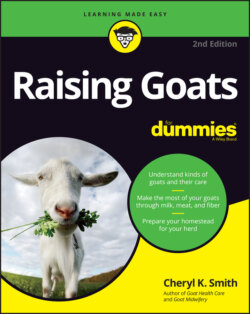Читать книгу Raising Goats For Dummies - Cheryl K. Smith - Страница 73
UNDERSTANDING MINI GENERATIONS
ОглавлениеThe kids produced by the first cross of a Nigerian buck with a standard dairy goat is the first generation (F1). Breeding an F1 to another F1 gives you second generation (F2) kids. Breeding F2 to F2 gives you F3 kids and so on, for six generations.
A kid’s generation is always one generation higher than the lowest generation parent. So if you breed an F2 to an F1, the kids will be F2. Even if you breed an F4 to a F1, the kids will still be F2.
F1 and F2 goats are considered experimental. F3 through F5 goats are called “American” and an F6 is a purebred. Ask about the generation when buying a registered mini dairy goat. Purebreds are worth more than first generations.
The minis don’t have quite as many multiple kids as the Nigerians — which can even have septuplets — but they are more likely to have triplets and quadruplets than the standard breeds.
You can find Mini Nubians and Mini Manchas pretty easily. Finding Oberians, Mini Toggs, Mini Alpines, and Mini Saanens can be more challenging because there are fewer of them. (Chapter 16 tells you more about breeding miniature dairy goats.)
If you plan to milk and you live in a city that allows backyard goats, these little goats are a good choice. Jenny Grant of the Goat Justice League, which got the Seattle City Council to allow miniature goats within the city limits, recommends the Oberian and the Mini Mancha for urban situations because they’re the quietest.
